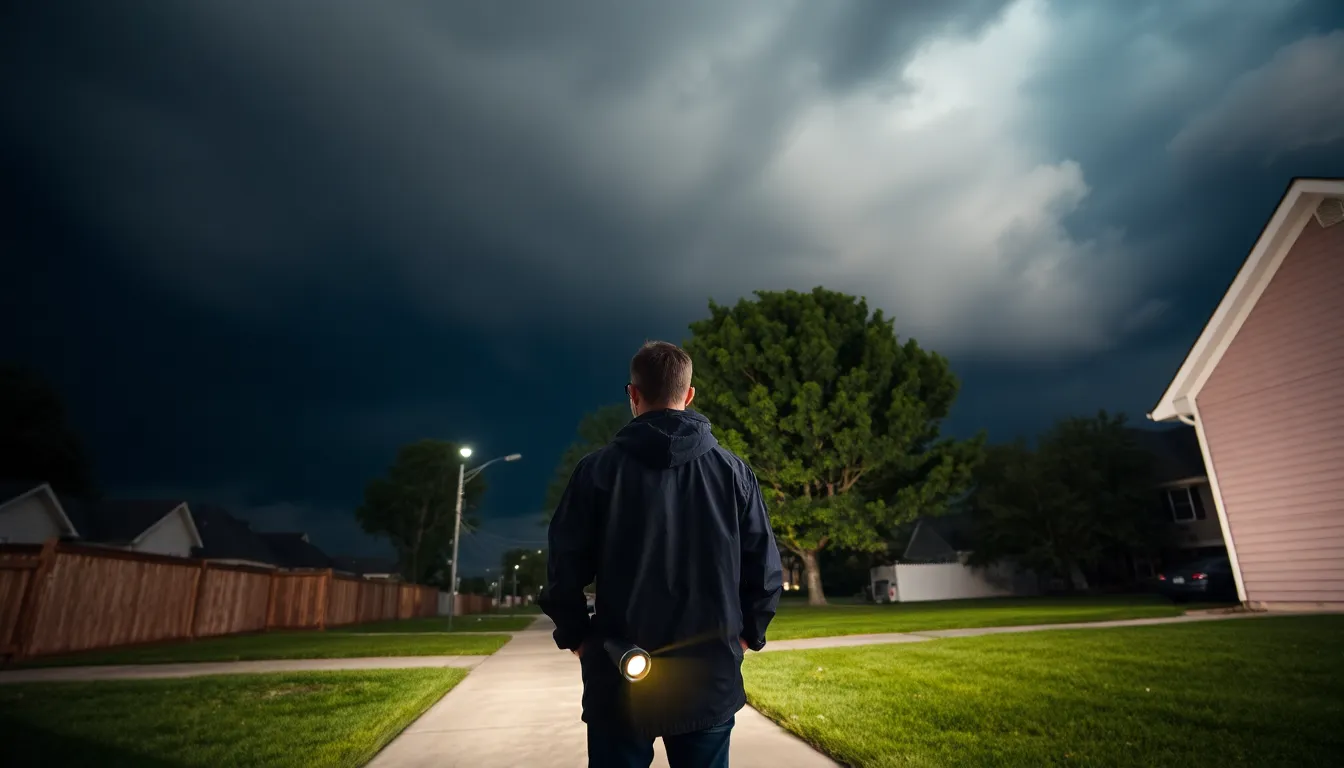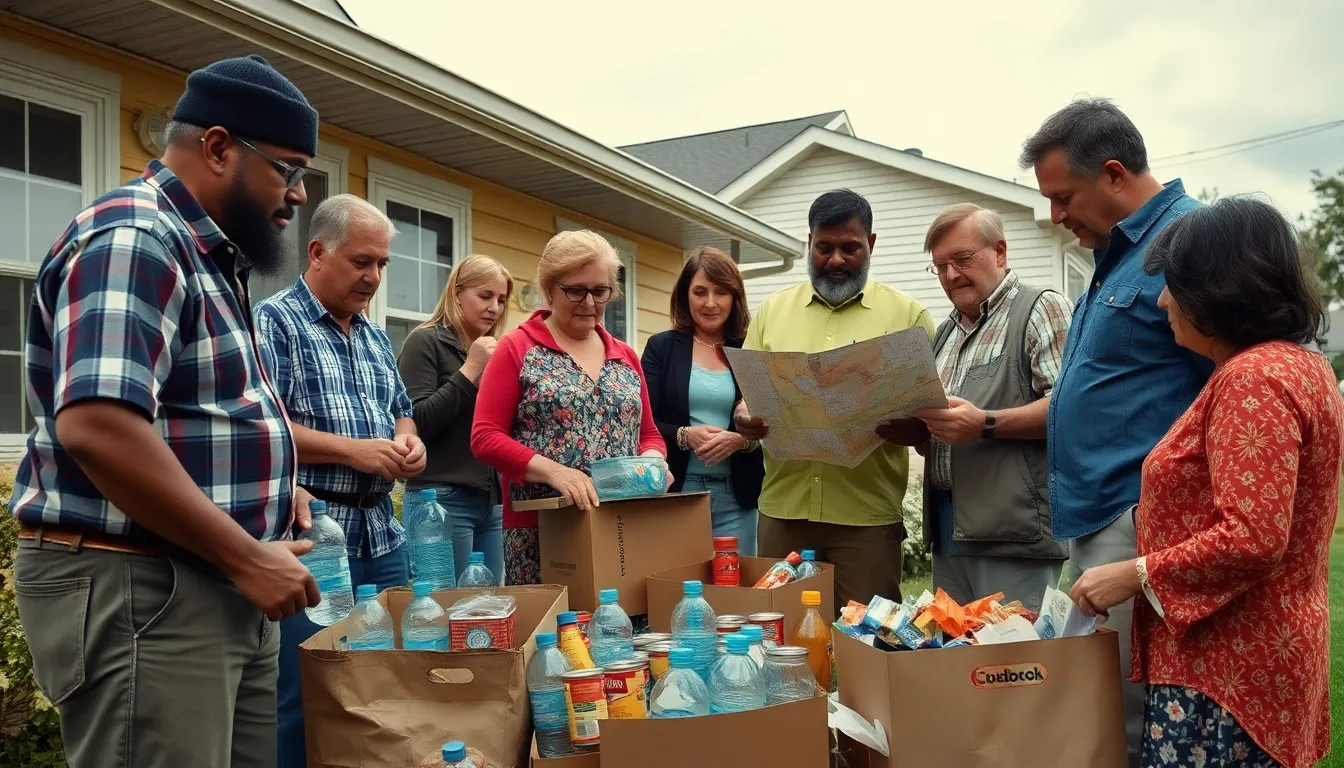Table of Contents
ToggleWhen dark clouds loom and the winds start to howl, it’s time to channel your inner Boy Scout and get prepared. Storm preparation isn’t just for the doomsday preppers or the overly cautious neighbor with a bunker in his backyard. It’s for anyone who values their sanity and their home. After all, nobody wants to be the person scrambling for flashlights while the power’s out and the fridge is playing a game of “guess what’s spoiled.”
Getting ready for a storm can be as simple as stocking up on supplies and making a plan. With a little humor and a dash of organization, anyone can transform storm anxiety into storm readiness. Let’s dive into the essentials of storm preparation and ensure you’re not left in the dark—literally and figuratively—when the next tempest rolls in.
Importance of Storm Preparation
Storm preparation plays a crucial role in ensuring safety for individuals and families. Risk levels increase significantly during severe weather events, making it essential to be proactive. Knowing what supplies to gather and how to stay informed can reduce panic and enhance readiness.
Preparedness minimizes damage from storms. When supplies are organized and easily accessible, people can respond quickly. Creating an emergency plan for evacuation or sheltering increases confidence. Experts recommend maintaining an updated inventory of essential items.
Safety systems also benefit from storm preparation. Install or check weather radios to receive alerts, and familiarize yourself with multiple sources of information. Staying connected enhances awareness about changing weather conditions, enabling timely responses.
Financial implications arise from lack of preparation. Costs for repairs and supplies can escalate after a storm hits. By investing time and resources upfront, individuals can mitigate expensive consequences down the line.
Community awareness contributes to overall preparedness. Engaging neighbors in discussions about safety strategies fosters a collective response during emergencies. Local organizations often provide resources and training sessions which enhance community strength.
Overall, storm preparation serves not only individual needs but also benefits the wider community. Prioritizing readiness improves resilience against unpredictable weather, allowing everyone to navigate storms with greater assurance.
Types of Storms

Understanding different types of storms helps individuals prepare effectively. Each storm type presents unique challenges, and being informed can enhance safety measures.
Hurricanes
Hurricanes form over warm ocean waters and can create powerful winds reaching over 157 mph. These storms lead to heavy rainfall and significant flooding, often impacting coastal regions. Damage from hurricanes includes destruction of infrastructure and homes. Evacuation plans are critical as the storm approaches, with necessary supplies gathered beforehand. The Saffir-Simpson scale categorizes hurricanes into five levels, assisting in assessing potential impacts. Recognizing official warnings and updates through weather sources proves essential for timely responses.
Tornadoes
Tornadoes result from severe thunderstorms and exhibit rapidly rotating air columns. These weather phenomena can form with little warning and may produce winds exceeding 300 mph. Destructive capabilities lead to significant damage along narrow paths, creating hazards in their wake. The Enhanced Fujita Scale rates tornadoes based on damage levels, offering insight into their severity. Seeking shelter in basements or designated safe areas remains vital during tornado warnings. Staying alert to local alerts and watching weather updates ensures readiness for sudden occurrences.
Thunderstorms
Thunderstorms typically develop in warm, moist conditions, featuring rain, lightning, and thunder. These storms may produce heavy downpours, leading to flash flooding in vulnerable areas. Severe thunderstorms can spawn hail and tornadoes, making them potentially dangerous. Monitoring the weather forecast allows individuals to prepare for sudden storms. Having an emergency kit in place ensures quick access to essentials during these unpredictable weather events. Lightning poses a serious threat, so taking shelter indoors during a thunderstorm remains crucial.
Essential Supplies for Storm Preparation
Being ready for a storm requires specific supplies to ensure safety and comfort. Gathering essential items beforehand reduces last-minute stress and allows for a timely response.
Water and Food Storage
Water and food remain crucial during storms. Each individual needs at least one gallon of water per day for three days. Non-perishable food items such as canned goods, granola bars, and dried fruits provide nourishment without refrigeration. Stocking up on these essentials ensures families can sustain themselves during extended outages.
Medical Supplies
Medical supplies play an important role in storm preparedness. Having a first aid kit is vital, containing items like bandages, antiseptic wipes, and pain relievers. Regularly checking and replenishing medications can prevent shortages. It’s also wise to include specific medical needs for dependents or pets in an emergency plan.
Tools and Equipment
Tools and equipment assist in storm preparation and response. A reliable flashlight with extra batteries enhances visibility during power outages. Additionally, multi-tools and duct tape can be helpful for quick repairs. Keeping a battery-powered weather radio ensures access to important information and updates. Properly stocked tools allow for efficient management of any damage caused by storms.
Creating a Storm Preparedness Plan
A strong storm preparedness plan enhances safety and coordination during severe weather events. This plan should cover various key aspects to ensure that individuals and families are well-equipped for emergencies.
Family Communication Plan
Establishing a family communication plan keeps everyone connected during a storm. Each member should know how to reach one another via cell phone, text, or social media. Designate a meeting place outside the home in case evacuation is necessary. Agree on a primary contact person outside your immediate area to relay information in case local lines become overloaded. Make sure to review the plan regularly, updating contact information and meeting points as needed. In emergencies, clear communication plays a critical role in ensuring everyone’s safety.
Evacuation Routes
Identifying evacuation routes is vital for their safety during storms. Research local maps and government resources to pinpoint primary and alternative routes from home. Each route should lead to safe zones, such as community shelters or family and friends’ homes outside the danger zones. Share these routes with all family members to ensure everyone understands where to go if evacuation becomes necessary. Regularly practice the evacuation plan, enabling smooth transitions during real emergencies. Knowing the best routes boosts confidence in the face of unpredictable weather.
Staying Informed During a Storm
Staying informed during a storm plays a crucial role in safety and preparedness. Knowledge about weather conditions allows individuals and families to make timely decisions.
Weather Alerts and Warnings
Regularly monitor local weather alerts and warnings to stay updated. The National Weather Service (NWS) provides critical information through various channels, including radio and mobile apps. Distinctions exist between watches and warnings; a watch indicates potential hazards, while a warning signals imminent danger. Heeding these alerts ensures timely actions are taken, whether that means seeking shelter or evacuating. Preparedness strengthens when individuals remain vigilant and responsive to updates.
Reliable Sources of Information
Identifying reliable sources of weather information proves vital during storms. Local news stations often deliver real-time coverage and updates. Official social media accounts for emergency management agencies also provide accurate information quickly. Weather apps on smartphones can offer notifications about significant changes in conditions. Heeding the updates from these trusted sources helps individuals remain informed and prepared. Combining information from multiple channels ensures a comprehensive understanding of evolving weather situations.
Being prepared for storms is not just a matter of caution; it’s a vital strategy for safety and resilience. By organizing supplies and creating a comprehensive emergency plan, individuals can face severe weather with confidence. Staying informed through reliable sources ensures timely responses to changing conditions, which can drastically reduce panic and enhance safety.
Community engagement plays a crucial role in storm preparedness, fostering collective strength and shared resources. Understanding the unique challenges posed by different storm types allows for tailored responses that can save lives and minimize damage. Ultimately, proactive storm preparation empowers individuals and communities to navigate unpredictable weather with assurance and effectiveness.







